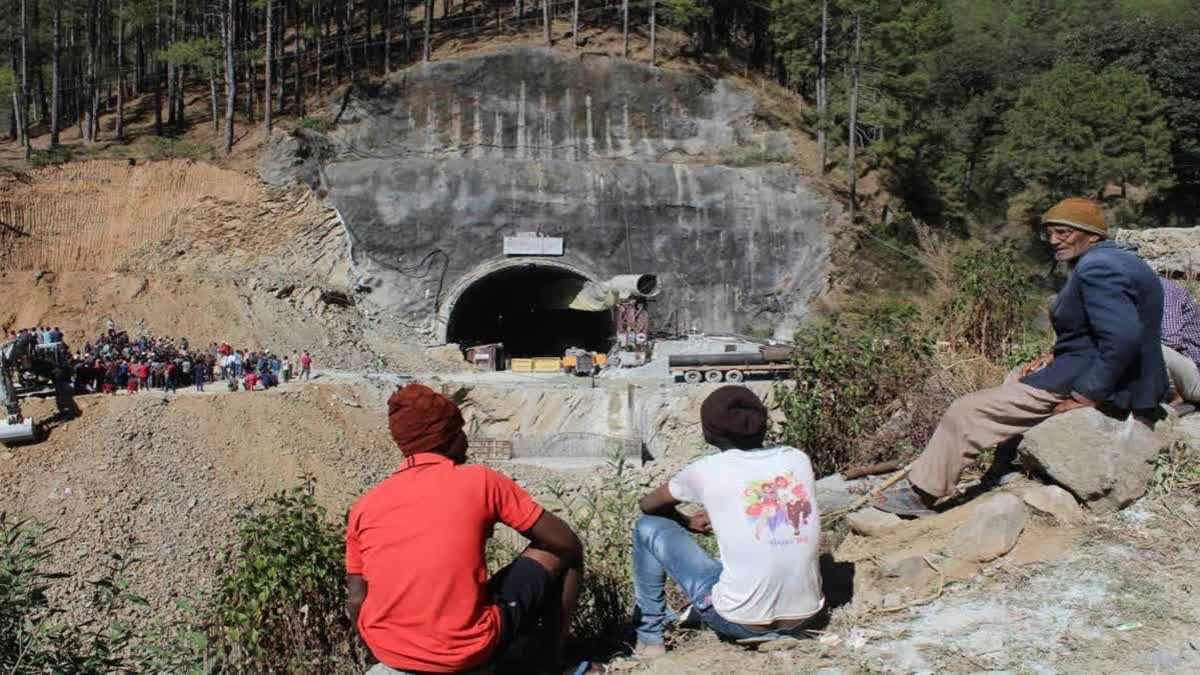New Delhi: A rat hole mining technique, which is considered an age-old means of mining employing traditional workers, will be used for manual drilling to remove the debris inside the pipe on the 16th day of continued rescue efforts in the Silkyara tunnel, according to officials.
A similar technique, considered contentious but prevalent in tribal societies in the Northeast, pitted the ethnic groups against the Centre. In the context of Uttarakhand, when all modern techniques failed to bring the desired results, authorities have gone back to the age-old technique.
Despite a ban, rat-hole mining remains a clandestine practice for coal mining in Meghalaya, where mines keep collapsing from time to time. Rat hole mining involves digging of very small tunnels, usually only 3-4 feet high. Workers (often children) enter and extract coal there. The National Green Tribunal (NGT) banned it in 2014, on grounds of it being unscientific and unsafe for workers.
In Uttarkashi, a team of six specialists have reached the site to undertake the manual drilling work. They will go inside the 800 mm pipe of the tunnel to remove the debris manually. The team includes engineers from the Indian Army's Madras Engineering Group as well as civilians.
How would rat miners proceed
Apart from the drilling machine, a hammer, a shovel, a trowel, and a life support device for oxygen will be carried by these specialised teams while going inside the tunnel. The auger machine being used for horizontal drilling of the tunnel that got stuck inside the pipe was cut and removed earlier today using a plasma cutter.
The auger machine stuck inside the pipe, produced 48 m of debris on the mouth of the tunnel, which will also be removed by the rat miners. Rat miners are specialists in digging and drilling manually in narrow passages including tube mines who mostly work in mines and have the experience of drilling for hours.
The rat hole mining technique is generally used in coal mining, especially in regions that have difficult terrain. "It is a challenging operation. We were called in from Delhi. We reached here yesterday. We are basically from Madhya Pradesh. We will try our best to complete the drilling process as soon as possible," one of the civilian specialists who reached the site to carry out manual drilling told news agency ANI. The
Army's engineering unit has made steel frames of 1.2x1.5 m whose thickness is 1 m. The Madras Sappers along with the help of other agencies will take the frames one by one from the mouth of the tunnel to the inside which will also take at least 10 days. Thirty personnel of the engineer regiment are at the spot to expedite the rescue operations.
What happened to vertical drilling plan?
Over 35 metres of vertical drilling work have been completed so far out of the 86 metres needed to reach the trapped workers. SJVN, a public sector undertaking company involved in hydroelectric power generation and transmission, started the vertical drilling work on the top of the tunnel atop the hill on Sunday, November 26.
This machine has the capacity to go only to a depth of 45 meters, after which the machine and its parts will be replaced and then the manual drilling work will start. Today is the second day of vertical drilling and as per National Highways and Infrastructure Development Corporation Limited (NHIDCL), the drilling work is expected to be completed by November 30, as the agencies have set a time frame of 100 hours i.e. four days for it.
Addressing a press conference in Uttarkashi on Sunday, NHIDCL Managing Director Mahmood Ahmad said, "We have to drill around 86 meters to be done within four days, that is by November 30. Hopefully, there will be no further hurdles and the work will be completed on time." If the 1.2-metre diameter pipe is successfully removed, then the NDRF team will pull up all 41 labourers from the top of the mountain using a harness machine.
Boring is also being done through a 200 mm diameter pipe at a distance of 14 meters from another part which will give a better clarity of the shape and structure of the ground from the surface of the mountain to the surface of the tunnel. Multiple agencies are working on the rescue efforts. In collaboration with the Border Road Organisation and other agencies, efforts are underway to enter from the other mouth of the tunnel that is the Barkot side.
Four blasts were undertaken under the supervision of BRO and so far only 10 metres out of 500 meters have been covered. Also, the rescuers are planning to build a mini tunnel along the left side of the tunnel, horizontal but perpendicular to the Silkyara tunnel, the work of which will be undertaken by SJVN.
As per the official sources, the length of this perpendicular mini tunnel will be 180 m but it will take another 10 to 15 days. The agency has planned to start the work for this on November 28. After a portion of the tunnel caved in on November 12, the debris falling in the 60-metre stretch on the Silkyara side of the tunnel trapped 41 labourers inside the under-construction structure.
Read more:
- Doctor on phone, video games...: How workers trapped in Silkyara tunnel are being helped to cope with stress
- Not involved in construction of Uttrakhand tunnel, says Adani group
- Rescuers establish audio-visual communication with trapped workers at Silkyara tunnel, workers healthy, talk with rescue teams



